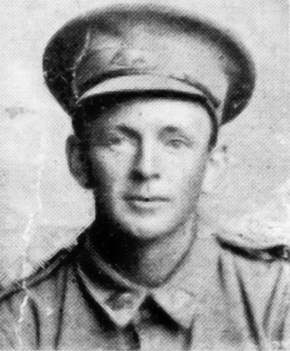NATTRASS, Daniel James
| Service Number: | 2005 |
|---|---|
| Enlisted: | Not yet discovered |
| Last Rank: | Private |
| Last Unit: | 2nd Infantry Battalion |
| Born: | Echuca, Victoria, Australia, 1882 |
| Home Town: | Not yet discovered |
| Schooling: | Not yet discovered |
| Occupation: | Butcher |
| Died: | Tuberculosis, Wallerawang, New South Wales, Australia, 1924 |
| Cemetery: | Not yet discovered |
| Memorials: | Wagga Wagga Victory Memorial Arch |
World War 1 Service
| 10 Apr 1915: | Involvement Private, 2005, 2nd Infantry Battalion, --- :embarkation_roll: roll_number: '7' embarkation_place: Sydney embarkation_ship: HMAT Hororata embarkation_ship_number: A20 public_note: '' | |
|---|---|---|
| 10 Apr 1915: | Embarked Private, 2005, 2nd Infantry Battalion, HMAT Hororata, Sydney |
Help us honour Daniel James Nattrass's service by contributing information, stories, and images so that they can be preserved for future generations.
Add my storyBiography contributed by Michelle Maddison
Daniel James ‘Dan’ Nattrass was born in Echuca in 1882, the youngest of eight children born to Mark Joseph Nattrass and Sarah (née Race). His siblings were Julia Maria, Annie Hilda, Ralph, Joseph, Mary Jane, Sarah Adeline ‘Adelaide’ and Matthew Aaron.
It is not known when or why Dan moved to Wagga[1], but his sister Annie had settled there when she married George Downie in 1911, and she was listed as his next of kin, so they must have had a close relationship. When he enlisted, his address was the Ganmain Hotel, Ganmain.[2] Annie was a well-known Red Cross worker during the war.
Dan, a butcher by trade, enlisted in the early stages of the war, and joined the 2nd Battalion on the Gallipoli Peninsula on 27 June 1915. The 2nd Battalion was among the first infantry battalion raised during World War I, with men recruited from NSW. They took part in the ANZAC landing of 25 April as part of the second and third waves.
On 6 August 1915 the 1st Brigade (of which the 2nd Battalion was a part of) led the charge at Lone Pine. It is not recorded whether Dan took part in this battle, although it must be assumed that he did. On 28 August he sought treatment at the field ambulance for a gunshot wound to his right arm, and two days later, was admitted to the Hospital Ship ‘Assaye’, which evacuated casualties from Cape Helles, Anzac and Suvla Bay.
Dan sustained his injury on 14 August 1915, but did not leave the trenches for treatment. The wound healed twice, but then broke down. On his admittance to the No. 2 Australian General Hospital in Cairo, a bullet could be felt in the back of his arm. It was recorded on his Treatment Sheet that:
Pat (patient) is deaf, rather deafer in L. ear than R., has been deaf since a shell burst near him 2/12 (2 months) ago.
He also required dental treatment, his ears were to be examined and a lump in one of his glands which was very enlarged explored.
On 11 September 1915, Dan was discharged to the Mena Convalescent Department, and on 23 October, was transferred to the Concentration Camp at Suez. Here, he awaited transportation home to Australia, boarding HMT ‘Aeneas’ on 3 November. Dan was discharged suffering defective hearing in his left ear and tachycardia (an abnormally fast resting heart rate)[3] brought on by exposure (on active service in trenches) and over-exertion (strain). His medical records also show at this time that he had lost a stone in weight and was suffering from insomnia, headaches and pains in his head.
In December 1915 his Report on an Invalid stated that he had night sweats and coughed up ‘much phlegm’ in the mornings. At this time he was diagnosed with pulmonary tuberculosis.
Dan arrived in Australia on 26 November and was discharged as medically unfit on 19 January the following year, and returned to live in Wagga. On his return, he was employed at the Wagga Post Office until the effects of his war injuries caused him to be sent to Randwick Hospital, and later, the military recommended that he undertook treatment at the Wentworth Falls Sanatorium.
In February 1917 Dan reported to the Wagga recruiting office to enlist for active service abroad and perhaps unsurprisingly was rejected.
On 12 March 1918 Dan received a pension of 45 – per annum, and was living at Book Book Station, Wagga.
Dan died in 1924 at Wallerawang, NSW; his death the result of the consumption that he contracted in the trenches.
[1] When Daniel died, the Albury Banner and Wodonga Express reported that he had enlisted from the Wagga Mill, suggesting that Dan was perhaps an employee of the Murrumbidgee Milling Co.
[2] Letter written to the War Office by Daniel’s sister (Jean Hodgson?), 20 September 1915
[3] Pulse 120 (Medical Report on an Invalid, Helouan, 5 October 1915)









